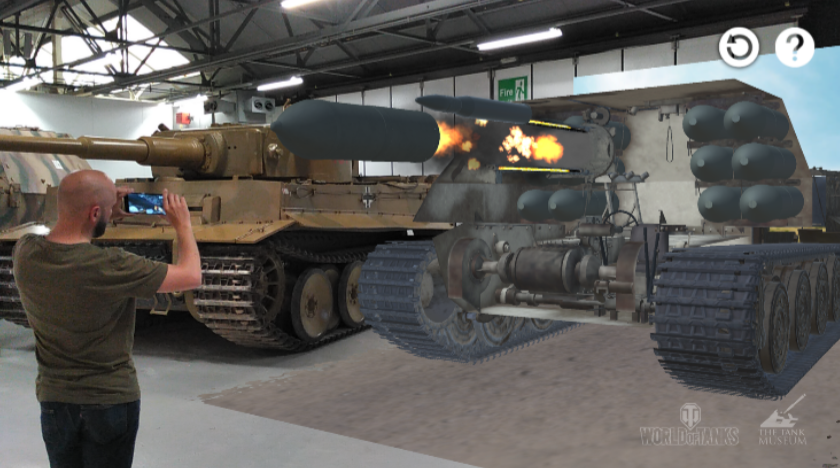Museums are homes to so many facets of the world’s history, but many don’t realize the efforts that go into recreating and/or acquiring the different items on display. If somehow a certain challenge to acquire a rare artifact is insurmountable, as was true when the Bovington Tank Museum was unable to obtain one of the three last surviving Sturmtigers, VR and AR provide an immersive alternative. Partnering with Wargaming and app developer Gravity Jack, the Bovington Tank Museum will have a faithful virtually-recreated Sturmtiger crashing through their walls via AR. The experience will be available either by a Google Tango-enabled tablet or Microsoft Hololens and users will be able to disassemble the tank, tour the inside, or even shoot one of its rockets.
Wargaming is responsible for the wildly popular game World of Tanks so they have a wealth of experience with digital tanks. Combine that with Gravity Jack’s VR/AR pedigree and Bovington Tank Museum has a one-of-a-kind experience for patrons. The experience will be available either by a Google Tango-enabled tablet or Microsoft Hololens and users will be able to disassemble the tank, tour the inside, or even shoot one of its rockets.
“Augmented Reality allows visitors to explore the SturmTiger in a way that is not possible with a physical tank,” said Tracy Spaight, Director of Special Projects at Wargaming. “Countless studies show the power of agency and presence in an experience as a means of enhancing learning and retention. We believe that AR technology will help museums connect with a new generation of museum-goers and bring history alive in a way that was not possible before.”
There have been other efforts to preserve history and inform through VR/AR, like the VR Timescope in Paris. This VR and AR experience, beyond just bringing history to life, allows museum patrons to interact with it in a way they normally wouldn’t be able to “primarily for reasons of public safety,” as museum director Richard Smith said.






























